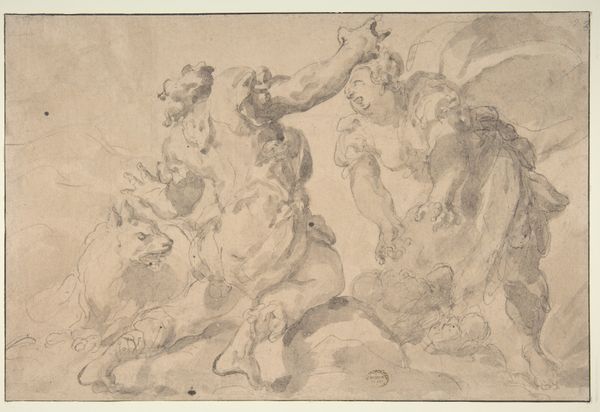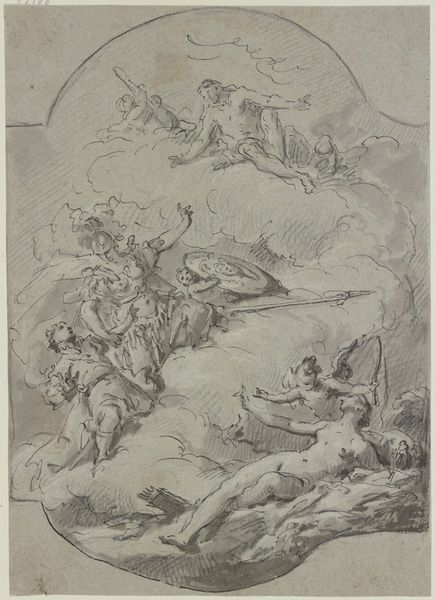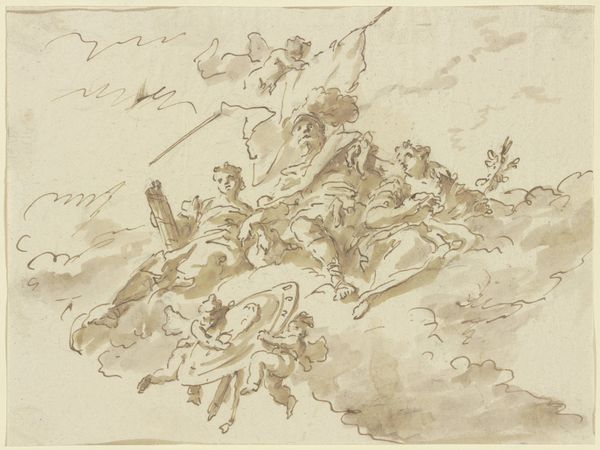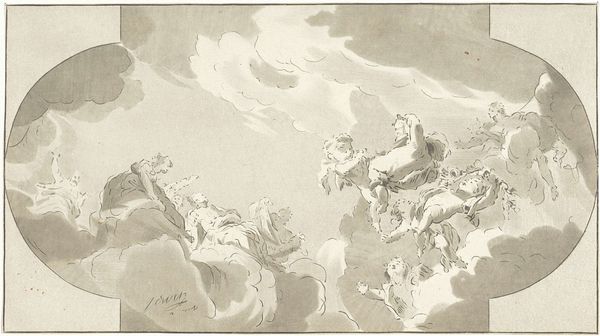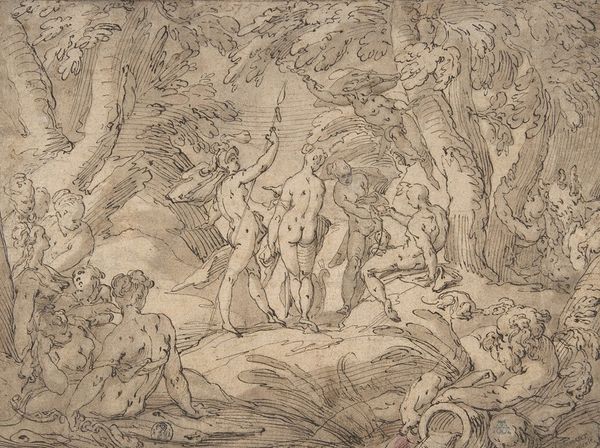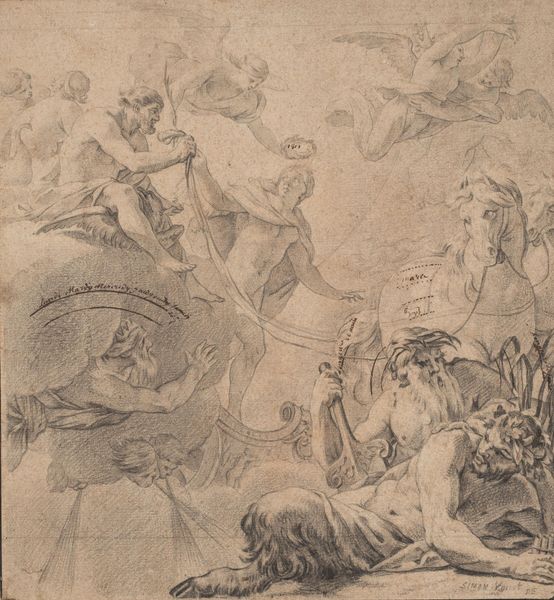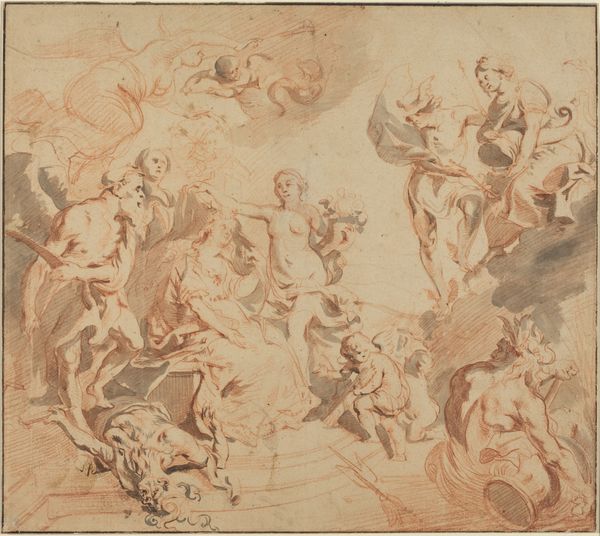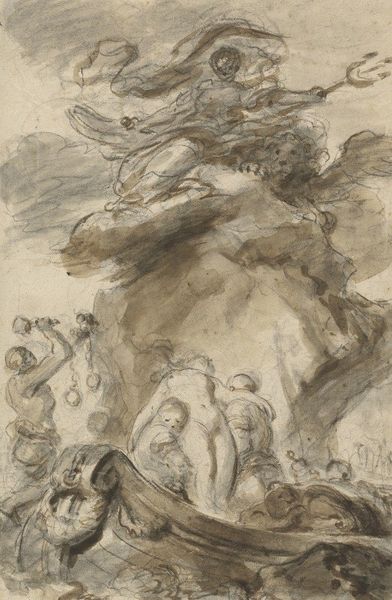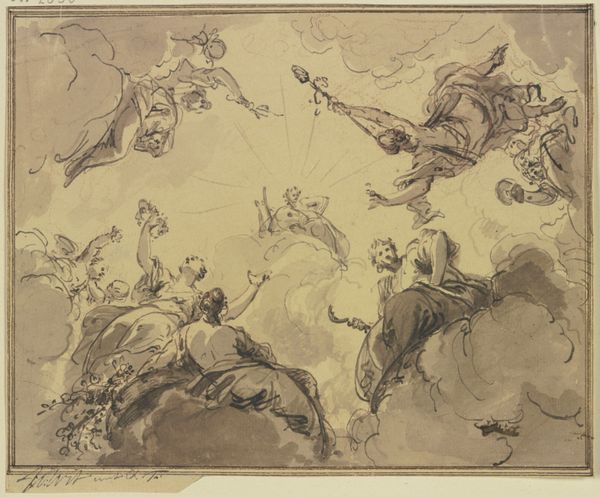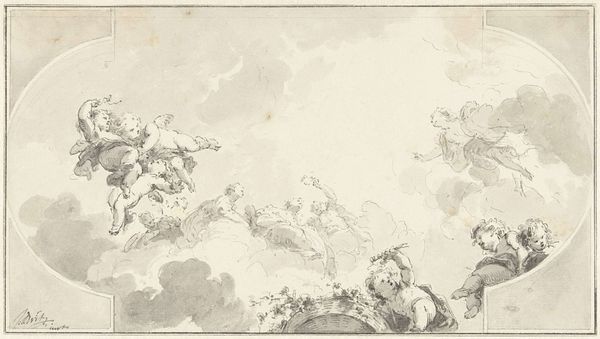
Copyright: Public Domain: Artvee
Curator: Look at the whirlwind captured in Fragonard's "Rinaldo in the Enchanted Forest," created around 1763 using ink and charcoal. What leaps out at you? Editor: Chaos, immediately. It’s a swirling composition. I'm intrigued by the contrast between the frenzied energy of the figures and the somewhat limited palette of browns and creams achieved through ink and charcoal. What kind of paper would hold that wash so well? Curator: A very good question, especially when one thinks about Fragonard’s political allegiances and those who acquired works like this: this drawing illustrates a scene from Tasso’s *Gerusalemme Liberata*, which recounts a story from the Crusades— a charged moment when examining religion and the legacy of Western powers. Rinaldo, armed, confronts the seductive enchantress Armida's magical forest. Editor: So, it's about the clash between duty and temptation. And look at the production: ink and charcoal, relatively accessible materials, bring this grand historical scene to life. Is this meant as courtly entertainment, a critical reflection, or something else? Considering its original acquisition, I suspect, and must hope, that this isn’t purely romantic fancy! Curator: Exactly! The Romantics grappled with concepts of heroism and human fallibility, and situating it within its social milieu as Fragonard sought patronage… He attempts to seduce prospective clients who were of varied beliefs—with both their political and philosophical implications. We need to remember that representations, especially from this era, perpetuated power dynamics rooted in identity. Editor: I agree entirely. And from a making point of view, look at how efficiently he conveys form and drama, with minimal resources: think of the availability of paper at the time too, which was linked to production and consumption: Fragonard skillfully manipulates shadow and light for drama with such common materials. That fact resonates deeply. Curator: Thinking about the history, I see a reflection on power and choice but that simultaneously re-inscribes stereotypes. Considering art history together with our current socio-political views reminds us of the stories we need to continue rewriting for justice to triumph in history as in art. Editor: For me, reflecting on it this way heightens the understanding of craft traditions and the legacy of available means through history. It compels one to ask how these works affected makers and audiences within their original moment and well beyond, and continue affecting them still.
Comments
No comments
Be the first to comment and join the conversation on the ultimate creative platform.
